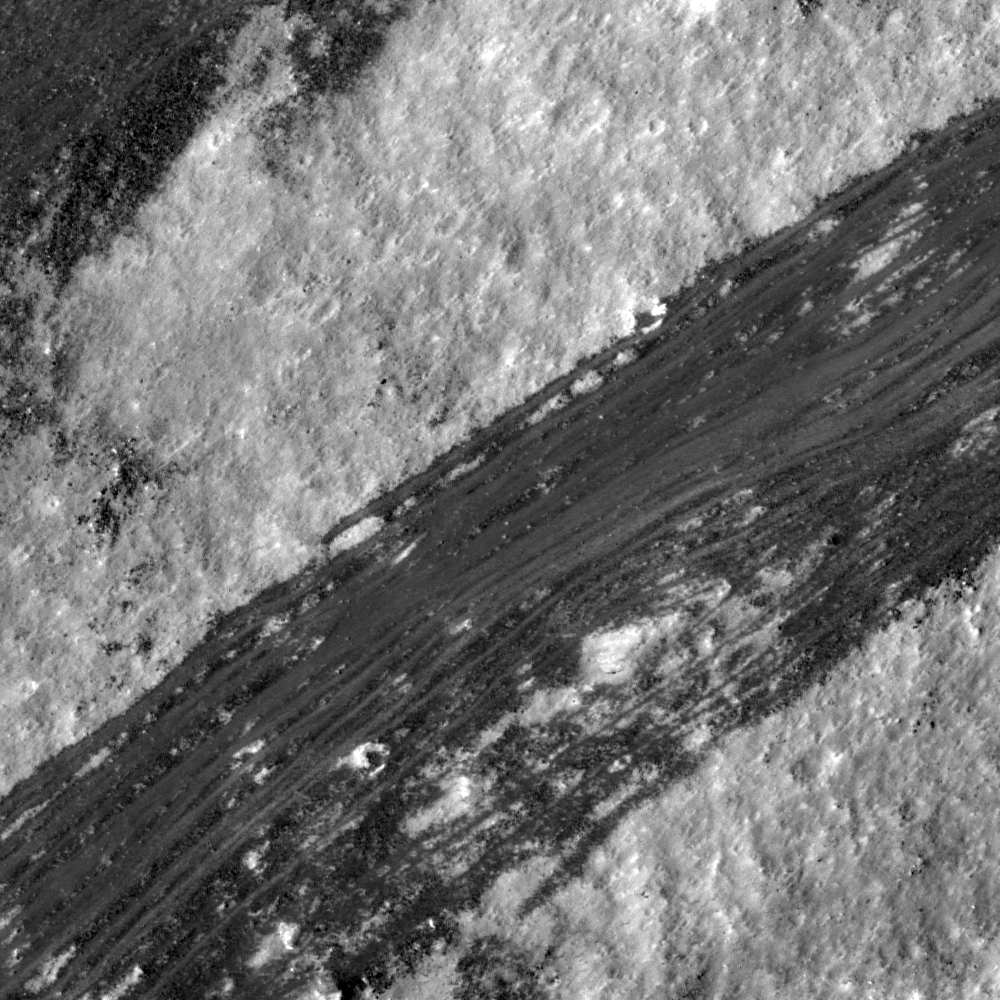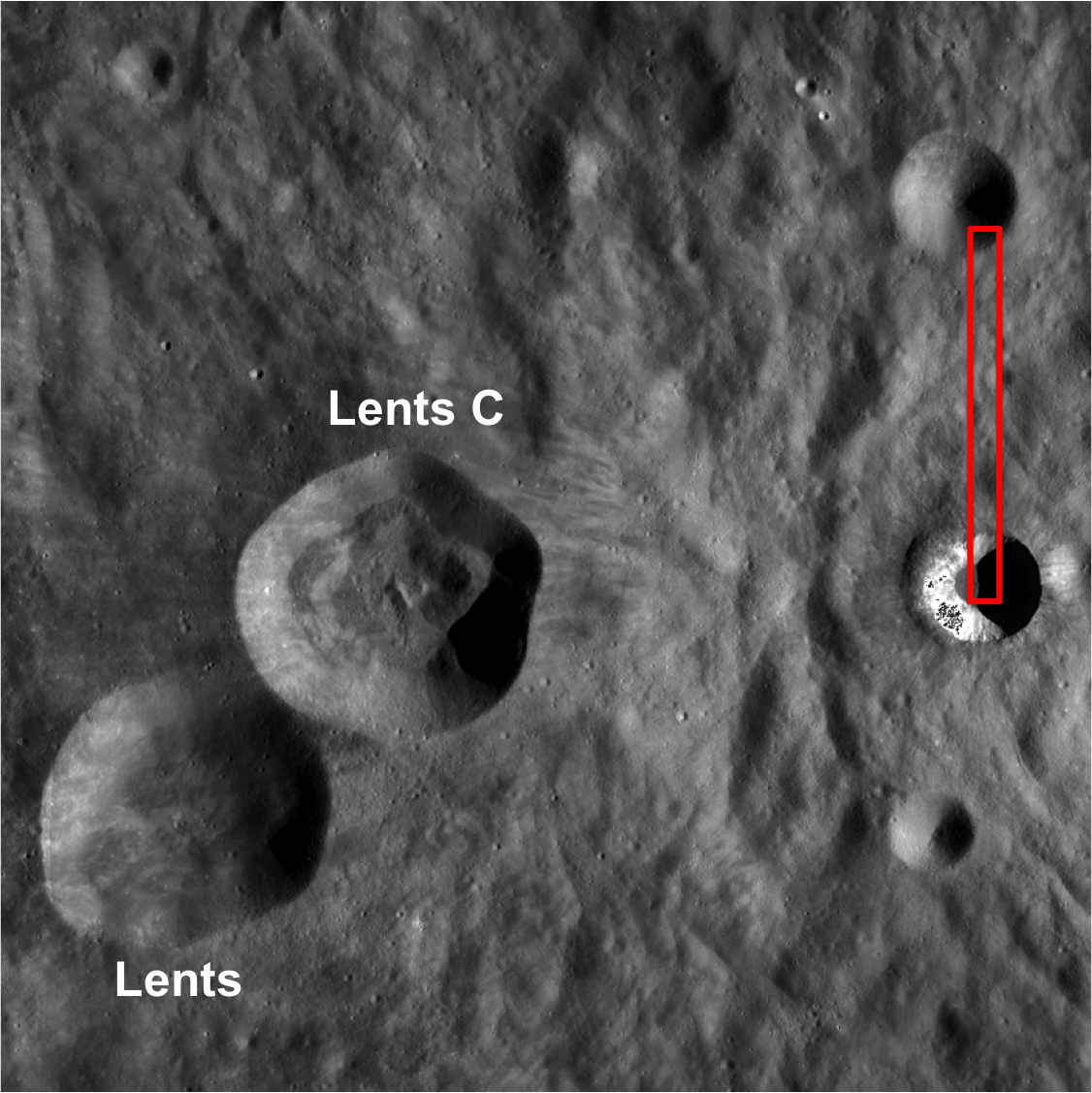
The wall of this 8.5 km diameter, Copernican-aged crater (located at 3.29°N, 100.25°W) is streaked with dark material. When geologists describe different surfaces on the Moon or other planetary objects, we use the terms "high reflectance" and "low reflectance." In this case, the wall of the crater is high reflectance, but some of the material that has flowed down the wall is low reflectance. What is the cause of the low reflectance of this material? How is it different from the high reflectance crater wall? Are the differences caused by composition, grain size, or both? Also, is this flow a granular flow, or an impact melt flow? Sometimes these two types of flow can behave similarly.
Some quick observations can point us in the right direction. First, the crater is located on the far side of the Moon, in an area of highlands. This location most likely means that we are not observing a compositional difference, as there are no nearby sources of mare basalt that could account for the low-reflectance material. Second, in this particular NAC frame there is no evidence for impact melt deposits around the rim of the crater, although you can find evidence of impact melt in the crater floor. The crater is not large enough to develop terraces where impact melt can pool and then flow out. So this flow is probably granular, not molten.
Explore the entire NAC frame for more Copernican-aged awesomeness!
Related Images:
Published by Sarah Braden on 24 August 2011
